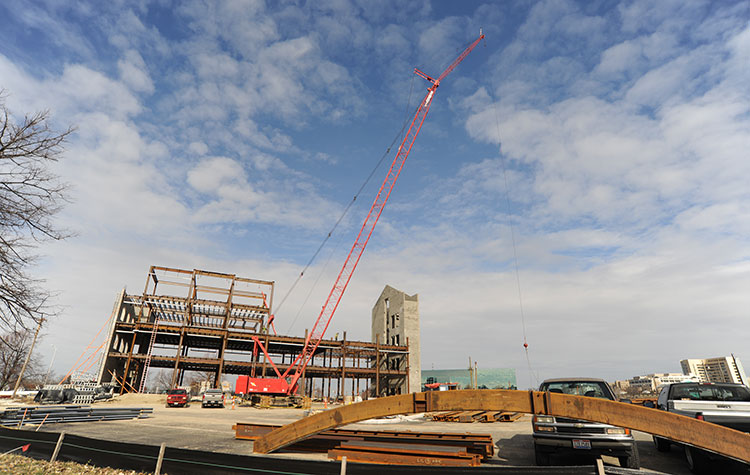Document Type
Article
Publication Date
4-2010
Publication Source
ITE Journal
Abstract
In 2002, there were 1,299,000 crashes at signalized intersections in the United States. These crashes account for approximately 21 percent of total crashes and about 24 percent of all fatal and injury collisions. The social and financial impact of this number of collisions is substantial. The Federal Highway Administration (FHWA) and other agencies have recognized the detrimental effects of intersection crashes on our society and continue to fund research that will lead to a decrease in crash frequency. Numerous countermeasures have been tested for their potential to reduce crashes. Infrastructure improvements such as the construction of left-turn lanes, the removal of unwarranted signals and improvement of drainage through intersections have all proven to be effective at reducing crashes.
Improving the visibility of traffic signals has also been cited as an important safety measure. Many intersection improvements are prohibitively expensive to implement—a drainage upgrade may cost in excess of $20,000, and new turn lanes may exceed $40,000. The financial impact of a countermeasure is always an important consideration to decision makers who are charged with the responsibility of allocating resources effectively. Low-cost safety countermeasures have become highly desirable as funding for transportation projects becomes more limited. Light emitting diodes (LEDs) have been used in various applications since their invention more than 40 years ago. As the new style of lighting gained popularity in other disciplines, engineers began to recognize the potential for LEDs in traffic applications. Traffic signal bulbs account for approximately 90 percent of the total energy usage at a typical intersection. By converting incandescent bulbs to LEDs, energy consumption can be decreased by about 80 percent. The California Department of Transportation (Caltrans) was one of the first agencies to realize large-scale cost saving by using LEDs. In 2003, Caltrans saved taxpayers $10 million per year by converting state-operated signals to LED. LED use became more widespread in the traffic industry as other government entities became aware of the potentially massive energy savings, eventually leading to the adoption of standard specifications and federal energy requirements for traffic signal modules.
Conversion to LEDs has triggered other benefits besides the well-known energy reduction. They do not burn or distort lens covers, they may help preserve intersection wiring by drawing less power and they appear brighter than conventional signals. All of these advantages may also lead to an impact in another sector of traffic engineering—intersection safety. Visibility of LEDs seems to be superior, which could positively affect driver behavior. Reduced maintenance on the fixtures decreases the exposure of workers to traffic and the total number of work zones required at intersections. Also, the minimal energy usage allows for the use of battery backup systems to operate the intersection during a power outage. Could all of these factors combined improve overall intersection safety? The objective of this study was to use empirical Bayes estimation to determine whether there was a noticeable decrease in crashes at signalized intersections that have been converted to LED signals.
In the field of traffic engineering, little research has been published about the safety benefits of increased signal visibility, though it has always been considered inherently beneficial. A study by Thomas et al. discusses the high reduction in crashes and high cost-benefit ratio for projects that replaced pedestal-mounted signals with more visible mast-arm-mounted ones. Improved traffic signal visibility was determined to be a cost-effective safety strategy.
The Institute of Transportation Engineers cites improved signal visibility as a useful safety measure to be considered for implementation. LED signals are specifically described as being brighter and more conspicuous during inclement weather. Engineers have begun to utilize LEDs in railroad crossings as a potential safety improvement due to improved visibility and longer life. Flashing lights are installed horizontally at approaches to warn drivers of a train.
Inclusive pages
22-27
ISBN/ISSN
0162-8178
Document Version
Published Version
Copyright
Copyright © 2010, Institute of Transportation Engineers, 1627 Eye Street NW, Suite 600, Washington, DC 20006 USA.
Publisher
Institute of Transportation Engineers
Volume
80
Peer Reviewed
yes
Issue
4
eCommons Citation
Eustace, Deogratias; Griffin, Valerie E.; and Hovey, Peter W., "Analyzing the Effects of LED Traffic Signals on Urban Intersection Safety" (2010). Civil and Environmental Engineering and Engineering Mechanics Faculty Publications. 11.
https://ecommons.udayton.edu/cee_fac_pub/11
Included in
Civil Engineering Commons, Other Civil and Environmental Engineering Commons, Transportation Engineering Commons, Urban Studies Commons




Comments
Used with permission. Permission documentation is on file.